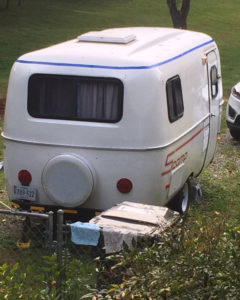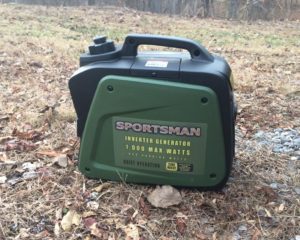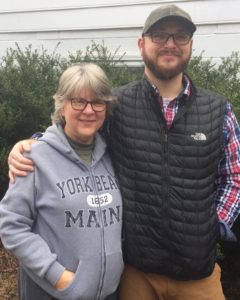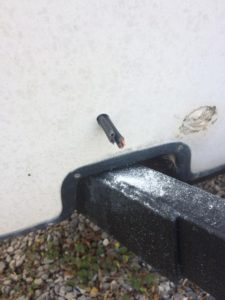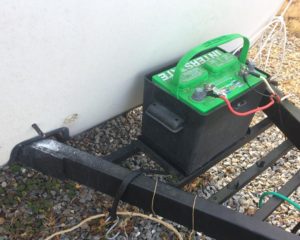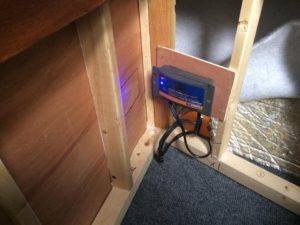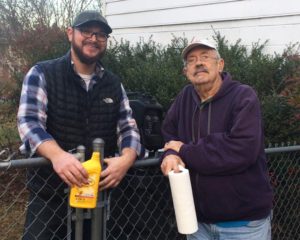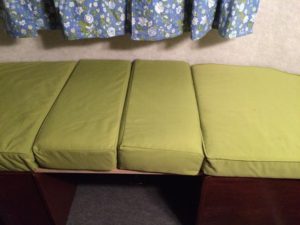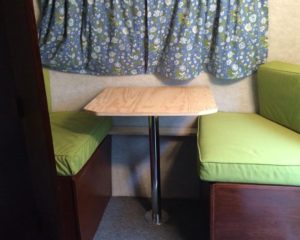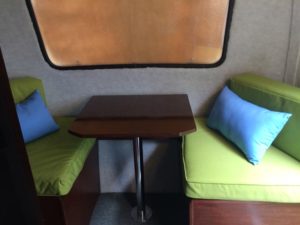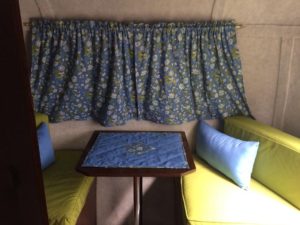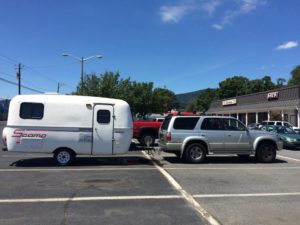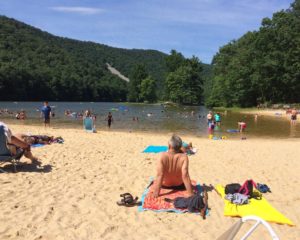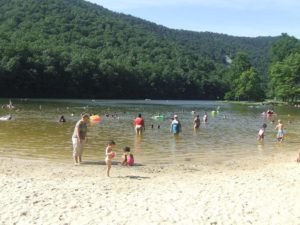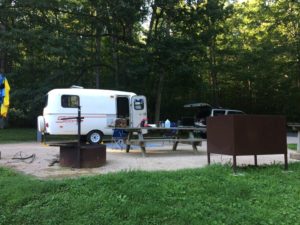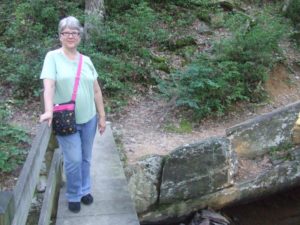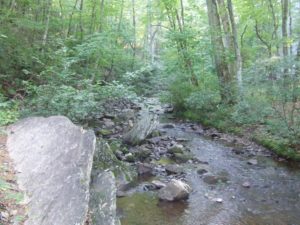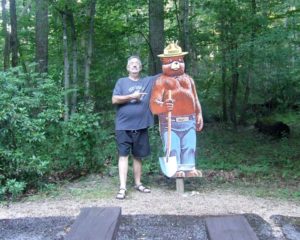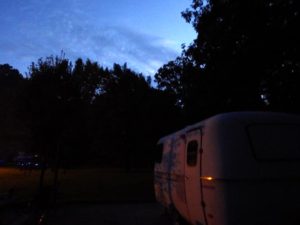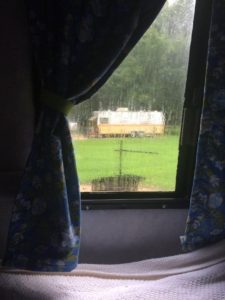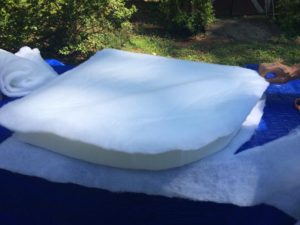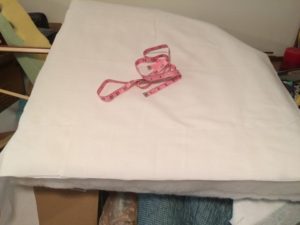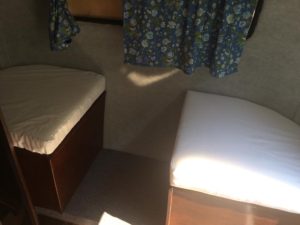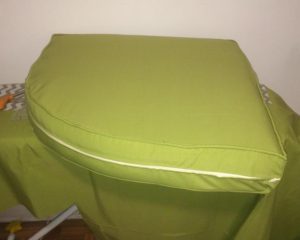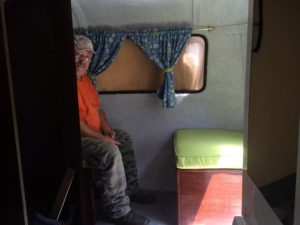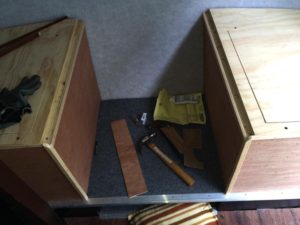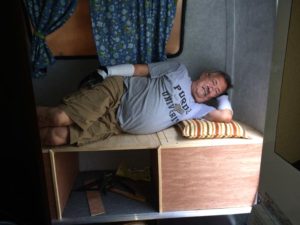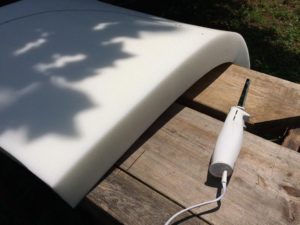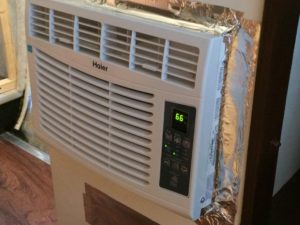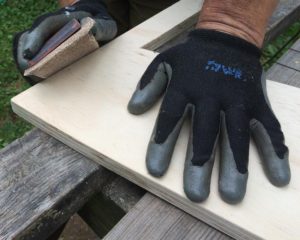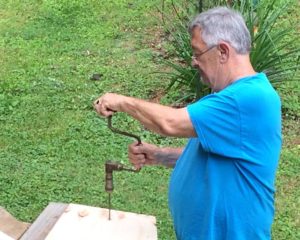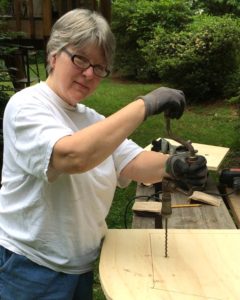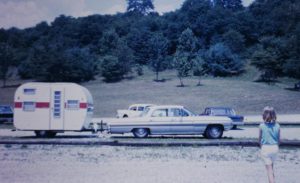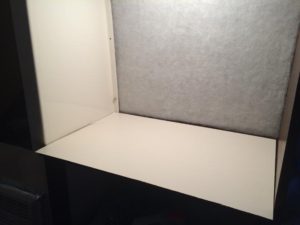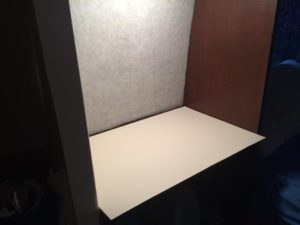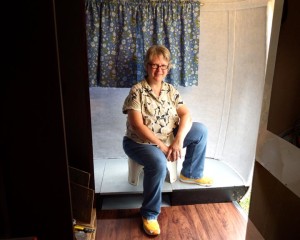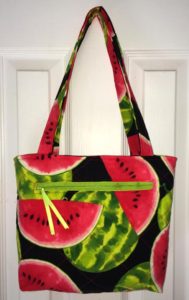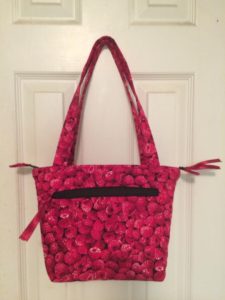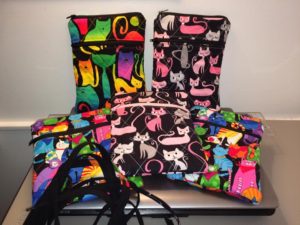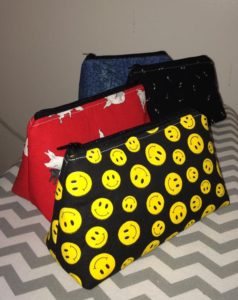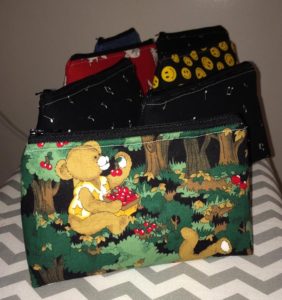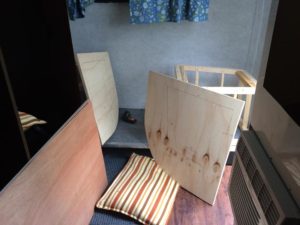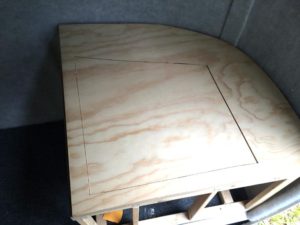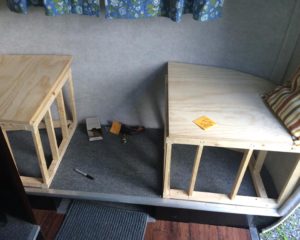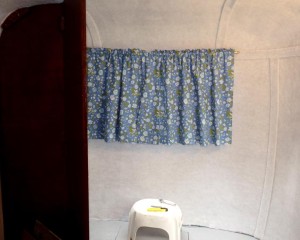What a busy, productive day!!
We got up early and started working on the trailer. Since we bought it in November 2014, we’ve had some minor leaks inside which are probably due to tiny pinholes on the roof (that are essentially invisible). We’d patched all that we’d found but still had some leaking after heavy rains, so we decided to do an all-over roof sealant. Fingers crossed that this will fix it, once and for all…


By 10:00, Wayne had the first coat of sealer on the roof, and while we waited for that to dry, we drove over to the local landfill and had our car weighed; 4620 lbs. The woman at the scale said it would be fine to come back later to get the weight of the car and trailer, so that became part of the afternoon’s plan.
16′ Scamps can weigh anywhere between about 2200-2800 pounds (or more), depending on how they’re equipped and packed, but the weight of our trailer has been a mystery since we bought it. It was basically a shell before we started renovating it, and everything we built (counters, cabinet spaces, benches, permanent bed in the back, etc.) was made with 3/4″ plywood–certainly heavier than the fiberglass components that are found in traditional Scamps. On the other hand, we only have an A/C in the front closet, and don’t have a refrigerator, stove, heater, water tanks, and other things that you’d find in a trailer fresh from the factory.
Last September when a friend had to tow our trailer home after our Toyota 4Runner broke down on our way to a campground, he said it felt really heavy to him–possibly as much as 3500 pounds! Yikes! It seemed impossible that we could have added that much weight with the wood, but we’d started wondering if we should try to make some modifications inside to make it lighter.
Our 2000 4Runner served us well (most of the time…) as a tow vehicle, but last August I bought a Kia Sorento with the intention of being able to use it to pull our trailer. Rated to tow 5000 pounds, I finally had a hitch, wiring harness, and brake controller installed early this summer. Since it was too hot (and WAY too bright!) to try to get the second coat of sealant on the roof during the middle of the day, we hooked up the trailer to the Kia to do a test drive.
The hitch on the Kia is much lower than the one on the 4Runner, so I got a 4″ rise mount and hoped that would be enough to keep the trailer level while towing. Also, the new brake controller was different from the one on the 4Runner, and we needed to figure out how to use it.
The reviews for the Tekonsha Voyager brake controller were quite good, but after reading the manual, it seemed much more complicated to calibrate than the one we have on the 4Runner. Once we had the basic adjustments figured out (while still in our neighborhood), we made our second trip of the day to the landfill.
I could definitely feel the trailer behind me (these little single-axle trailers bounce like crazy…), but the car seemed to handle it without a problem. Also, while we’d attached towing mirrors to the regular side mirrors on my car, I found I could actually see better just with the Kia’s wide side mirrors. (We’ll probably try these towing mirrors again at some point before deciding, for sure, that we don’t need to use them–or that we need to buy a different style of mirror.)
We got to the landfill, waited until the attendant (a different person) waved us onto the scale, and explained that we’d like to get a weight on the car and trailer. If we’d wanted an “official” weight with a printed receipt, there would have been a charge, but there was no charge just to have it weighed. Nice! With a combined car/trailer weight at 6300 pounds, we were delighted to learn that the trailer weighs just 1680 pounds! MUCH better than we’d anticipated.
Virginia law states that trailers over 3000 pounds are required to have brakes, but as people in RV forums always point out, it’s not just a matter of how much your vehicle can safely tow, but how much it can safely stop. Since the brakes on the trailer were fully warmed up, we continued to drive around, making adjustments on the controller. At one point when I felt the brakes “grab” when I was stopping, I turned the power down. But then when I didn’t feel them activating quite enough, I moved the power up a bit. After more back and forth tweaking, we finally we seemed to find the right degree of braking power.
I also wanted to check to see how level the trailer was, so we pulled into a parking lot to check the car, hitch, and trailer, and to take some pictures. Seems to be quite level. I’d bought a ball mount that offered a bit more space from the back of the car to the trailer because I wasn’t sure if a standard one would allow us to open the hatchback without hitting the jack on the trailer. I think either would have been fine.


Wayne wanted to get a picture of me with the car and trailer, but oh my…. Yes, here I am making quite the fashion statement, still dressed in my early morning goofy painting garb. 😉


We drove for a while at highway speeds on Rt. 250 because I wanted to experiment with the “sport mode” on the Kia. Many people recommend using this engine mode when towing a trailer. (This model of Sorento has normal, eco, and sport modes.) At this point, I’m not really sure what I think of it; I’ll need to read more to see what the advantages are–and tow a bit more to see how the car responds–before knowing if it’s the best mode for us to use with this particular trailer.
When we got home, I had to back the trailer into the driveway. Ugh. While I DO understand how to do this–in theory–it is still a miserably slow process, even with Wayne’s patient assistance. Finally, finally I had it backed up into the right place, and overall we agreed that we were pleased with the way the car had performed on this short trip out and about.
By late afternoon, it was time for the second coat of roof sealant. Again we used painters tape and newspaper to make sure that the sealant stayed just on the top of the roof. I guess this time it went on faster, but by the time we’d finished we were both sweaty, exhausted, and ready for Ibuprofen.
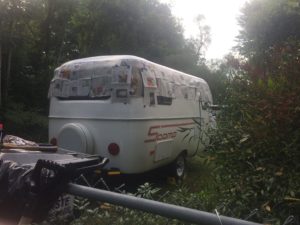
So after a few Scamp-centric days, we got a lot done! The main body of the trailer is much shinier than it was (and hopefully easier to keep clean); the roof has been sealed and is now a very shiny, bright white; we know what the trailer weighs; we know that the car will tow it just fine; and we know that the brake controller will stop it. Now to find time to actually GO somewhere with it! 🙂






